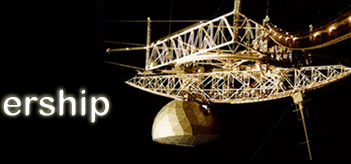

The Unique Capabilities of the Arecibo Observatory
The unparalleled sensitivity and angular resolution of Arecibo allow a number of unique investigations which will not be possible with any other instrument in the foreseeable future.
v Arecibo is uniquely suited to study phenomena which are both faint and transient.
v Arecibo is the only S-Band planetary radar facility in the world, and is by far the most sensitive and accessible. It is crucial for characterizing the orbits and impact probabilities of near earth asteroids. It is also the most sensitive instrument for tests of general relativity in the solar system, investigations of internal structures of solid planets, and constraining surface activity of the Moon and Mercury.
v Only Arecibo has the potential to time radio pulsars at the highest precision possible. This makes it a crucial element in the worldwide Pulsar Timing Array and could lead to the first-ever direct detection of gravitational waves.
v Arecibo is the only telescope that can detect the faintest “dark” galaxies, objects which consist largely of dark matter, and those with the lowest masses. Arecibo has already detected more low-mass galaxies than all previous radio surveys together.
v Only Arecibo can study the faintest and most transient radio sources discovered in the large scale surveys currently underway at the Observatory. Securing the future of Arecibo is vital for ensuring the full potential of these surveys and determining the nature of new source classes.
v Only Arecibo can retain the full surface brightness sensitivity of a single filled aperture while providing excellent angular resolution. Arecibo offers better resolution than the best existing large-area radio survey. The Observatory has enabled astronomers to see revolutionary new types of interstellar structure, including shards ripped off of high-velocity clouds, high-energy filaments produced by magneto-gas-dynamic intermittency, and blobs that are probably gravitationally bound by dark matter.
v Arecibo is by far the best telescope for detecting the faintest millisecond pulsars in exotic binary orbits. These sources will initially be challenging to detect with the planned SKA due to computational limitations.
v Only the Arecibo-Radioastron Earth-to-space interferometry baseline can search for the physical components of active galactic nuclei responsible for intra-day variability, recently shown to exist in more than 50% of compact radio sources. Arecibo to VLBA baselines are 10 times more sensitive than VLBA-only baselines. This sensitivity makes it possible for the High-Sensitivity Array (Arecibo+VLBA+other large antennae) to perform follow-up studies of the faintest pulsars.
v Only Arecibo has the collecting area and frequency coverage (1 to 10 GHz) to carry out very sensitive molecular line surveys. This unique capability is allowing astronomers to discover complex molecules and possibly life-forming molecules in distant galaxies.
v Arecibo is by far the best telescope for studying the emission mechanism of radio pulsars. High signal to noise detections of single pulses enable sophisticated polarimetric studies of the exotic physics of pulsar radio emission, which is an outstanding unsolved problem in astrophysics.